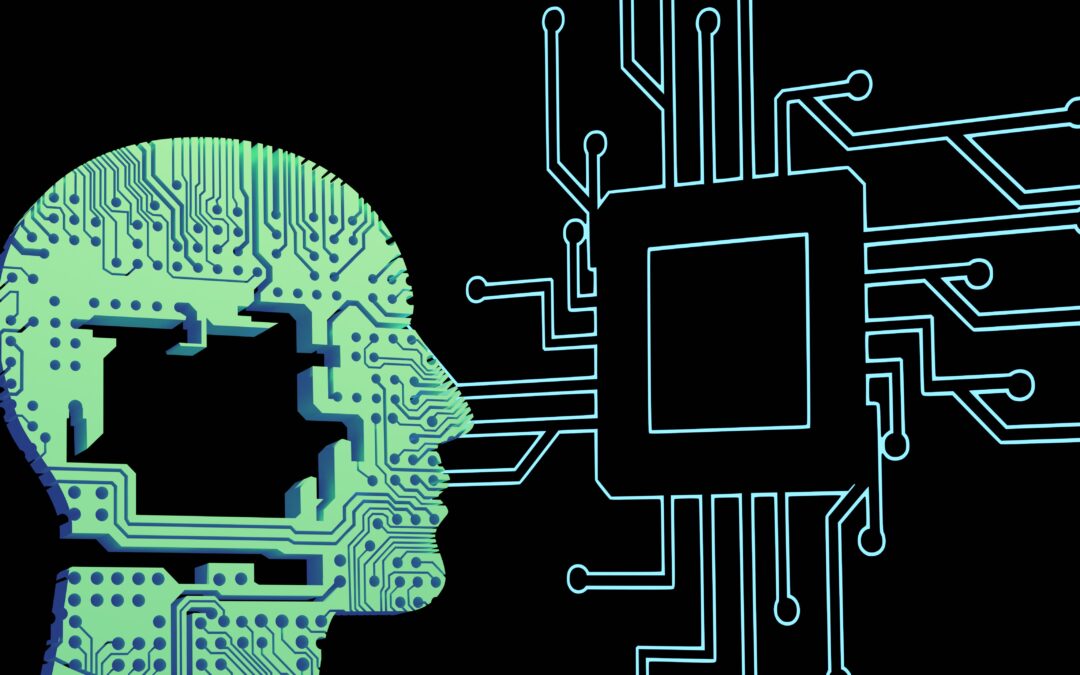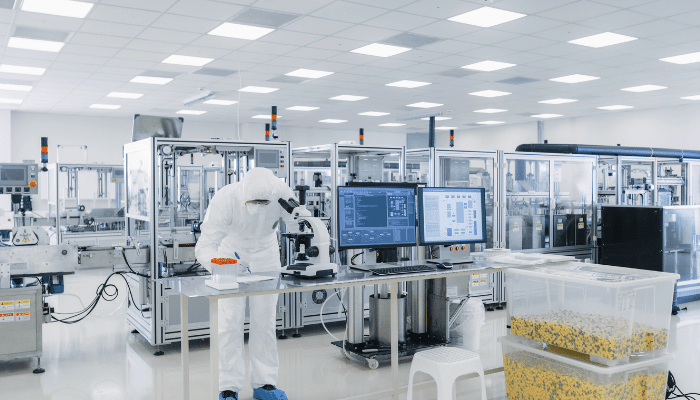The Internet of things in Industry 4.0. You have likely heard these words said around the industry at least a few times. The internet of things and industry 4.0 are both very valuable pieces to manufacturers’ success today and in the future. These phrases are also very commonly used together. While they definitely tie in together, they are not exactly the same thing, there are some key differences.
In this article, we will differentiate the two, and clear the air on what each of these concepts/ideas are. Furthermore, we will get into how you can make these two work together for your benefit.
Industry 4.0
Industry 4.0 is the movement. It’s not any specific thing, it’s just the idea that ties everything together. In the past, there have been Industry 1.0, 2.0, 3.0, and now we are experiencing Industry 4.0- the fourth industrial revolution.
This revolution started around the early 2000s. However, it’s really got moving and has made a much bigger impact in the last 5 years.
Many people associate automation with the IoT in Industry 4.0. Although automation is a big part of Industry 4.0, and there is more automation available with Industry 4.0 technology. The truth is that automation actually was the big change in Industry 3.0.
Industry 3.0 brought us machine automation. New machines that could run without operators being part of the process the entire time. In industry 3.0 theoretically, you could turn on a machine, run it all night, and come back in the morning to a finished product. That is automation. This automation from Industry 3.0 created data that wasn’t tapped into at the time.
This data is what drives industry 4.0. Industry 4.0 is all about translating the data we can pull from automated machines into information that is consumable for humans.
Internet of Things
We know what Industry 4.0 is, but now what role does the internet of things play? What is the internet of things in industry 4.0?
The internet of things, commonly referred to as IoT or IIoT, are the mechanisms or systems used to turn data into information. In a few words, Industry 4.0 is the idea, the movement, the principles. The internet of things is the system that makes this idea work, it’s the part that translates the industry 4.0 idea into real life.
The Industrial Internet of things on its own can be broken down into a really simple concept. Simply, it’s all about getting the information that everybody needs, in their hands, instantly right when they want it.
Putting all of this together is what brings us to IoT in Industry 4.0.
Now that we know what they are and the differences between the two, we can get into how they can work together for your benefit.
How You can make the Internet of Things and Industry 4.0 work together for Your Benefit
These two things are not exactly the same, but they do go hand-in-hand. When you put these two together- the principles and ideas of industry 4.0, mixed with the internet of things software and its capabilities, you create a lot of valuable possibilities for yourself. You can position yourself for massive growth, increased efficiency, and prime yourself to become an industry leader.
Here are a couple of specific ways that the internet of things in industry 4.0 can benefit your manufacturing process, help you to save money, and increase revenue.
Predictive Maintenance
Traditionally, you hear a lot about preventative maintenance. You might have scheduled every so often to do a maintenance check or change certain parts or fluids after x amount of time. This sounds good, likely a system that everybody has used, you probably do something similar to this for your car.
Utilize the IoT in industry 4.0 by upgrading your preventative maintenance schedule to predictive maintenance. Thanks to all of the big data sets that can be collected and analyzed by modern internet of things software, you have the ability to predict when machines will need maintenance based on historic data and trends. This is possible today with the help of current internet of things software. Data was created in industry 3.0, but now we have the technology to efficiently extract and use this data.
No matter how often your preventative maintenance schedule is, machines will still break. Although it’s near impossible to stop this completely, by analyzing trends in the data you will begin to understand exactly when each of your machines needs attention. Maybe you have too much planned downtime for preventative maintenance that might be unnecessary. Or, maybe the lifespan of your machine has dropped dramatically due to maintenance that was not as frequent as it should have been.
This is a great opportunity to improve the health of your machines and cut back on downtime. Whether the downtime is planned or unplanned. All possible today by using the internet of things with industry 4.0 principles to gather important information all over the plant floor.
Quality Control
Up until now, quality control has been on a reactive basis. For products that get damaged or something goes wrong, it’s up to the workers to try and catch it in time. In theory, this sounds fine, but
- People Make Mistakes
- Modern technology can take over this task, and do it better.
Even the best assembly line workers are susceptible to making mistakes. You can’t expect anything else, humans make mistakes. Because of this, manufacturers are left with a lot of scrap material, and a lot of products that cannot be sent out.
IoT in industry 4.0 changes that. Internet of things equipment has the capability the monitor the quality throughout the production process. It can assess performance and instantly find defects in real-time.
We have seen numerous cases ourselves here at ectobox where companies had excessive scrap that we were able to cut down a large portion of. All by integrating an industrial internet of things system.
Conclusion
This is just the tip of the iceberg. There are near endless possibilities and areas to make improvements when you have access to the big data that the internet of things brings you. On top of that, being able to acquire this data and turn it into consumable information in real-time is immensely valuable for any manufacturer.
We have a lot more to talk about. On the Ectobox blog, we are constantly publishing new content all the time. We have lots of articles about the internet of things, industry 4.0, manufacturing analytics, smart factories, and much more. If you found any value in this article, check out some of our other posts on related topics. Feel free to reach out to us anytime with questions or concerns, and subscribe to our newsletter on the right-hand side for exclusive weekly manufacturing tips and tricks.







